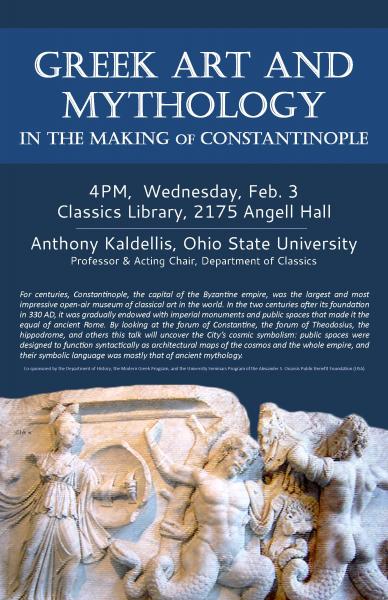For centuries, Constantinople, the capital of the Byzantine empire, was the largest and most impressive open-air museum of classical art in the world. In the two centuries after its foundation in 330 AD, it was gradually endowed with imperial monuments and public spaces that made it the equal of ancient Rome. By looking at the forum of Constantine, the forum of Theodosius, the hippodrome, and others this talk will uncover the City’s cosmic symbolism: public spaces were designed to function syntactically as architectural maps of the cosmos and the whole empire, and their symbolic language was mostly that of ancient mythology.
Co-sponsored by the Department of History, the Modern Greek Program, and the University Seminars Program of the Alexander S. Onassis Public Benefit Foundation (USA)
Co-sponsored by the Department of History, the Modern Greek Program, and the University Seminars Program of the Alexander S. Onassis Public Benefit Foundation (USA)
| Building: | Angell Hall |
|---|---|
| Event Type: | Lecture / Discussion |
| Source: | Happening @ Michigan from Modern Greek Program |


